Cultural Responsiveness

BOARD MEMBERS

Tiffany Barrett Keith Burke Rick Hunt
Nicholas Mitchaner Dan Peo Steve Samuel Kelly Storms
11025 East 25th Street Indianapolis, IN 46229 1-800-285-2188 or 317-891-9900 www.iasp.org tbarrett@iasp.org



Tiffany Barrett Keith Burke Rick Hunt
Nicholas Mitchaner Dan Peo Steve Samuel Kelly Storms
11025 East 25th Street Indianapolis, IN 46229 1-800-285-2188 or 317-891-9900 www.iasp.org tbarrett@iasp.org
I was born in northeast Indiana, lived in a small town, and raised in a Christian home by parents who were married for almost 50 years before my dad passed away. My hometown, school experiences, and friend group had some socioeconomic diversity, but most everyone I knew and hung out with looked like me, came from a middle-class family, and shared similar beliefs and values.
My small, private college education and early teaching and administrative experiences brought greater, yet limited, exposure to different backgrounds, faiths, beliefs, and lifestyles. Admittedly, some of that was due to living within my own comfort zone. Since I became principal of Avon High School, I have been challenged to grow even more. During my 10 years at Avon, our school grew by 800 students, and its student demographics changed with it. When I started, our school was 75% Caucasian and is now 54% Caucasian with our Black (22%) and Hispanic (11%) students comprising the next two largest student groups. In our district, students speak 90 different languages, and our multilingual population has grown to 13%. My school’s diversity is one of its best aspects, and I love meeting our students and their families. Our diversity adds rich meaning to our school mantra “We are Avon, We are One.”
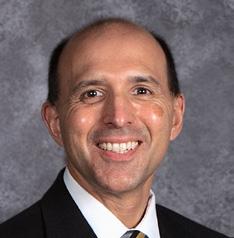
National speaker, Principal Kafele, challenges educators to ask, “Does EACH student matter in your school?” We are trying various ways to honor the diversity in our school community. Avon Men of Purpose and Black Women Speak groups were initiated two years ago. Our Inclusion, Diversity, Equity in Avon (IDEA) team publishes monthly newsletters and is planning professional development sessions for our staff. Our English Department is reviewing its curriculum resources and revising reading lists that better reflect our school’s diversity. The past two years, our librarian has hosted visits for our students with Black authors. Our district is currently working with Dr. Camea Davis and using Culturally Responsive Teaching: Theory, Research, and Practice by Geneva Gay as the text for growing our leadership capacity in culturally responsive pedagogy. Yet, some of our hardest conversations are still ahead as we dig into student achievement results and review Honors, dual credit, and AP enrollment data to compare student groups.
Tyrone C. Howard states, “Too many students pass through our school feeling unknown, uncared for, unsupported, and disengaged.” For me, this is a challenge to do better. Learning happens best when meaningful relationships exist, and when we listen to student voices, validate their experiences, and help them see connections to their learning. In my personal and professional journey, I have had numerous educators who have challenged me to consider other perspectives. I have also been given many resources that have informed my thinking along the way such as We Can’t Teach What We Don’t Know: White Teachers, Multiracial Schools (Gary Howard); How to Teach Students Who Don’t Look Like You (Bonnie L. Davis); and Culturally Responsive Teaching and The Brain (Zaretta Hammond). Our challenge is to be the leaders of schools that ALL of our students deserve. I hope this issue of the Indianagram can further push your thinking as IASP seeks to grow leaders’ knowledge of culturally responsive practices.
This November, we held IASP’s AP and Fall Professionals Conferences, and I was thrilled by our keynote speakers, concurrent sessions, and the brand new Lightning Rounds at the FC. A record number of you attended, and we got to celebrate the fact that IASP turns 30! Congratulations to our IASP District Principals and APs of the Year, and also to our state-level winners that are showcased in this issue. Let’s continue to be the association that responds to your needs and our students with the knowledge that “We Grow Leaders” happens each day through our actions and influences.
Matt Shockley IASP PresidentThis combined Nov/Dec issue of the Indianagram comes to you after we have wrapped up the AP and the Fall Conference, this allows us to highlight our Assistant Principals of the Year and our Principals of the Year. Be sure to read all about our state-level winners, Amy Boone, Aretha Britton, Daniel Mendez, and Ryan Langferman, and you can listen to their collective IASP Leadership Podcast recorded during the Fall Conference. We will also feature them individually in the spring via the Leadership Podcast series. Congratulations to all our District winners, and then to Amy, Aretha, Danny, and Ryan!

As I read over the articles within this issue, I am struck by the incredible and intentional work Indiana school leaders are doing for students that have different needs based on their racial, ethnic and cultural backgrounds. This honest and open dialogue they help us create through their articles is necessary for our schools to continue to improve, and also for IASP to continue to grow and improve as an association. Our mission statement reads, “The Indiana Association of School Principals leads in the advocacy and support of all principals in their commitment to every child.” Summing this up, we often just say, “All Principals, All Kids” and this continually reminds us of who we serve and what we must do to develop school leaders. This commitment to all also extends to finding ways to support our teacher and administrator pipeline that represents our classrooms across the state. Having IASP turn 30 this year, and now having been at the association since 2010, it has given me time to reflect on how we have grown in our service to all principals (and APS!), and also how we can further evolve in the next 30 years. I would give a shout out to our Executive Committee Members and Board Members over my tenure that have supported us with the development of programs that are responsive to our membership, and then also to their commitment to do more. We have taken initial and small steps over the last two years to support and grow our female school leaders, and those who are racially and ethnically diverse. This has occurred through the support of the Bayh College of Education at Indiana State University, and through the efforts of current school leaders who have been willing to share their leadership journey through mentoring and conversations with colleagues. I will commit that these small steps will grow in 2023 so that IASP does represent all principals and all kids.
In the spirit of our Thanksgiving holiday that just occurred, let me thank you for your leadership and support of IASP. It is with great respect and admiration of your work that I serve as your Executive Director. Thank you for all you do each day, so that all students have the opportunities we desire for them, and so that they can achieve their dreams through your commitment to their success.
Dr. Todd D. Bess IASP Executive Director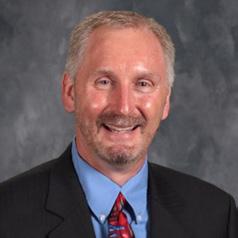
Social Media May 2023
Best of 2022-23 June 2023
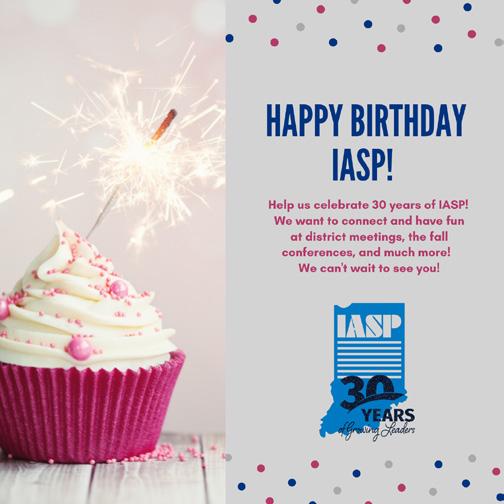


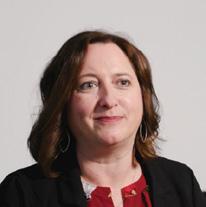
 Dr. Katie Jenner Indiana Secretary of Education
Dr. Katie Jenner Indiana Secretary of Education

Throughout this busy holiday season, I hope you’re finding time to enjoy the celebrations, while also staying focused on finishing the semester strong with our students.
We’ve spent the past year and a half working together to develop and build Indiana’s new Graduates Prepared to Succeed (Indiana GPS) performance dashboard. On behalf of our entire IDOE team, thank you for this unparalleled collaboration. Many of you have taken time throughout the development process to provide suggestions, feedback, and even ideas for future iterations. Some of the feedback has already been put into action–for example, we are currently working through how we can modify the trend arrows to account for minor year-toyear changes and ensure it is a clear reflection of the work happening in our schools and districts. So…please keep the feedback and ideas coming–this is only iteration one, with more to come!
From the very beginning, our work on Indiana GPS has been based on the fundamental belief that students are so much more than a single test score –and that a student’s entire educational journey shapes their lifelong path. For this reason, Indiana GPS spotlights a number of indicators that we have never measured before (with more still in development). As we re-envision how we strategically measure school performance, we have worked with many of you during the embargoed pre-release in order to talk through the methods of calculation you see on Indiana GPS as well as the data sources.
To give you a bit more time to dig in and understand the data, we shared in mid-November that we will extend the embargoed pre-release a bit longer, with a public release now anticipated in December.
Indiana GPS is a multi-purpose tool that can (and should) be leveraged by schools to help tell your unique
story, and ultimately, drive continuous improvement for students. In preparation for the public launch, I hope you are starting to think about how you can use the data locally. This could mean engaging families in discussions regarding the importance of literacy or forging new partnerships with institutions of higher education and industry to increase credential attainment and work-based learning opportunities in high school. You also might consider any additional indicators of significant importance in your community, to track alongside our statewide areas of focus.
And while I know we’re still a month out, this is my last Indianagram message to you until the new year…so enjoy this holiday season, finish the semester strong…and we’ll be ready to work together in 2023 to continue driving good work forward for our students!



As a school building leader, you’ve seen the numbers, and more importantly, you’ve seen the impact. Across Indiana, one in five third grade students have not yet mastered foundational reading skills, while more students are struggling with foundational math skills. For a student’s future success, it’s imperative that they receive the additional support they need now.
To support this student-centered mission, Indiana Learns officially launched in October. Eligible families of fourth and fifth grade students across Indiana can now access up to $1,000 in funds for approved tutoring services in reading and math, which can be in-person, virtual, or follow a hybrid model. The initiative’s goal is to increase access to effective, out-of-school academic support to help students recover from learning disruptions caused by the COVID-19 pandemic –opening doors for families that may not otherwise be able to pay out-of-school tutoring.
Since the launch of the family platform, eligible students have begun signing up for the program. These students have the ability to schedule tutoring through the platform with approved Learning Partners, including several school corporations who have matched funds for their eligible students.
“In the past year, teachers working with the Marian University Center for Vibrant Schools have tutored more than 2,500 students and provided more than 2.5 million minutes in tutoring. We are ready to be a strong partner with Indiana Learns to support additional educators and help children shine across the state,” said Dr. Anne Elsener, Director of Literacy Programs for the Center for Vibrant Schools.
All eligible students who participate receive a one-time grant of $500. School corporations have the opportunity to maximize student accounts by contributing an additional $250 per qualifying student. If this is done, the state will match the funds with another $250. Students enrolled in schools or corporations making the match will be able to access a total of $1,000 in funds. These matching schools or corporations are designated as Indiana Learns Champion Plus Schools.
Matching schools can also be involved by providing tutoring services as approved Learning Partners. Schools interested in this should visit the online platform to apply for approval.
Schools that would like to share information about Indiana Learns with their eligible families may view the Indiana Learns digital toolkit. The toolkit contains several resources that provide useful information about the program for interested families.
If your school or corporation is interested in matching funds, please contact Seana Murphy, Senior Director of Indiana Learns, at smurphy@indianalearns.org
For more information about Indiana Learns, visit our website or reach out to us via email at info@indianalearns.org.

 Dr. Aaron Willis Assistant Principal Avon High School
Dr. Aaron Willis Assistant Principal Avon High School

If you asked most people what the golden rule is, my guess is that they would quickly be able to rattle it off for you: “treat others the way I’d like to be treated.” This lesson is one that was taught to me in my youth, and I continue to hear it come up in a variety of settings. As we look at this month’s topic of cultural responsiveness, I would encourage you to consider the platinum rule, which I have heard referenced most recently by Dr. Nate Regier in his book, Seeing People Through. The platinum rule is “treat others as they’d like to be treated” (Regier, 2020). The platinum rule takes the golden rule one step further and encourages us to develop empathy for others by focusing on others’ needs rather than our own. The lens of culturally responsive teaching challenges us to recognize that all students can do something well. Building upon students’ strengths with an eye on their uniqueness and experiences can encourage students to increase engagement within their classes.
My co-author this month is one of my assistant principal colleagues at Avon High School: Dr. Aaron Willis. Dr. Willis is someone who views everything through a culturally responsive lens, including his practitionership as an assistant principal and also as a presenter. Dr. Willis recently provided some insightful professional development for our teachers at the start of this school year, and I am excited for him to share on this topic with our IASP members.
As a freshman in high school, sitting in Algebra II Honors, I was only one of three Black students surrounded by a sea of White classmates. Out of nowhere the teacher exclaims that, because we are unable to keep up in writing notes, asked her to please slow down, “All the boys in the room write slow, especially the dark ones!”
Simultaneously, all three of us look at one another in disbelief. Did she really just say that? Obviously, we disengaged from the
lesson in embarrassment at being belittled due to the color of our skin. Not only was this the teacher’s way of othering myself and the other black students academically, but by making fun of our writing speed, she also invalidated all the strengths, differences, and gifts that we brought to the table.
Though this was not the first time I was made to feel inferior or ashamed due to the color of my skin, it was a formative moment that was pivotal for me. This prejudiced comment led me towards the path of my own educational success. I knew that upon finishing undergrad and embarking on my journey of climbing through the ranks of education, that I would do everything in my power to ensure this form of trauma never happens to anyone else that looked like me. By being an educator, I could make sure that none of my own students felt the way I did that day.
Fast forward to the present, as a culturally responsive school leader, it is both my pleasure and duty to work with students, faculty, and staff, to create a culture where everyone feels welcomed, supported, and valued, for who they are and where they come from. Drawing on the work of Dr. Geneva Gay, “Caring teachers honor differences of and among students. They respond, in multiple ways, to the fact that students have different experiences, preferences, and capabilities, and that novelty, variety, and innovation stimulate interest and attention, which, in turn, improves academic engagement and performance outcomes” (Gay, 2018, p. 88). This quote reminds and inspires me that we as educators have two choices. We can embrace our students for who they are and what they look like to create a positive school culture or we can continue to be colorblind, and therefore be cultureblind, discouraging students along the way.
All educators will say students come to school to learn, however, is learning possible when the learning that is being taught is centered around euro-centric and middle class expectations? We must ask ourselves, in order to feel safe, respected, and to learn, are we asking students to strip away layers of themselves and assimilate?
It is impossible to advocate, educate, and celebrate our students if we do not first acknowledge their cultural background that they bring into the educational environment. Looking out at our students and not seeing color (or other aspects of their culture) is not a practice that validates their journeys and lets them know that they are worthy of the best education possible.
Let us first discuss some common misconceptions about cultural responsiveness:
1. Only motivates students of color.
2. Requires an educator to master the details of every culture represented in their classroom.
3. Having a “bag of tricks” to use with particular racial groups.
4. Respects the “culture of poverty”.
5. Only minority educators have the skills to be culturally responsive.
The truth about cultural responsiveness:
1. It is a student-centered approach in which a student’s unique cultural strengths are identified and nurtured to promote student achievement and a sense of well-being.
2. Educators will be empowered to deal effectively with the growing ethnic, cultural, and linguistic diversity within their schools.
3. It is an equitable pedagogical framework for ALL students’ learning and academic performance.
4. Incorporates student voice and cultural representation of all students in the learning environment.
5. Supports the whole child, which leads to higher engagement, less behavior/attendance issues, and increases the likelihood of life-ready citizenship.
Some differences that vary amongst different cultures in our classrooms:
1. Reactions to public shame
2. Use of eye contact with peers/adults
3. Concepts of time
4. Roles of family, teacher, and community in the students’ education
5. Role and responsibilities of siblings and guardians in the house
6. Sharing familial information
7. Emphasis on extracurricular opportunities
8. And many more!
How to create a culturally responsive, sustaining, and affirming school environment?
To create a culturally responsive, sustaining, and affirming school environment, one must remember that it is a marathon and not a sprint. First, educators must respond by seeing, validating, and empowering students for the various layers of culture that they bring to the school-community. Drawing on the work of Zaretta Hammond, we can use culture to build trust and rapport between educator and student. Without trust and rapport between educator and student, the student will not feel safe or take risks, which will result in the student being unable to grow academically or personally (Hammond, 2015). Once educators are able to genuinely and authentically respond to the cultural needs of the students, then it is time to ensure that the response is sustainable by adopting it into the school curriculum, expectations, and policies.
Educators need to continuously work to engage with students, colleagues, and community members surrounding the idea of ensuring everyone has a seat at the table without taking a step back and acknowledging what we are all afraid to acknowledge:
there is not one right way to be a student, not one right way to be an educator, and not one way to lead a school. By affirming this idea, we are admitting that there needs to be room for change, room for growth, and even room to struggle as we find our true school identity. The affirming nature of the school leadership will pave a path towards true cultural acceptance and validation.
What should I be prepared for when implementing this framework?
The information you are reading is not new, and these ideas are probably all things you have heard before...however, there are a few things that just need to be remembered when implementing this pedagogical framework.
Here’s what it is..., this is not and will not be an easy framework to implement in your school. Missteps will happen, staff members will push back out of fear that they are being called prejudiced, and community members will wonder why you are acknowledging race and creating possible opposition within the school.
Always remember, this is what John Lewis was referring to when he stated, “Get in good trouble, necessary trouble”. Ensuring that students can feel welcomed, safe, and loved, by having their cultural identities represented in their school is the only way to create a truly inclusive, sustaining, and affirming educational environment.
I only wish my freshman self could have had an educator that valued and embraced his culture. Sadly, that young man and many others have to crawl through school trying to fit in the mold of euro-centric and compliance education. It only takes one of us to embrace, celebrate, and accept the cultures of all of our students to make a big impact and to affirm all of our students.
Dr. Willis can be reached via email at awwillis@avon-schools.org Dr. Peo can be reached via email at depeo@avon-schools.org.
Gay, G. (2018). Culturally responsive teaching: Theory, research, and practice. Teachers College Press.
Hammond, Z. L. (2015). Culturally responsive teaching and the brain. Corwin Press.
Regier, N. (2020). Seeing people through: Unleash your leadership potential with the process communication model. Berrett-Koehler Publishers.


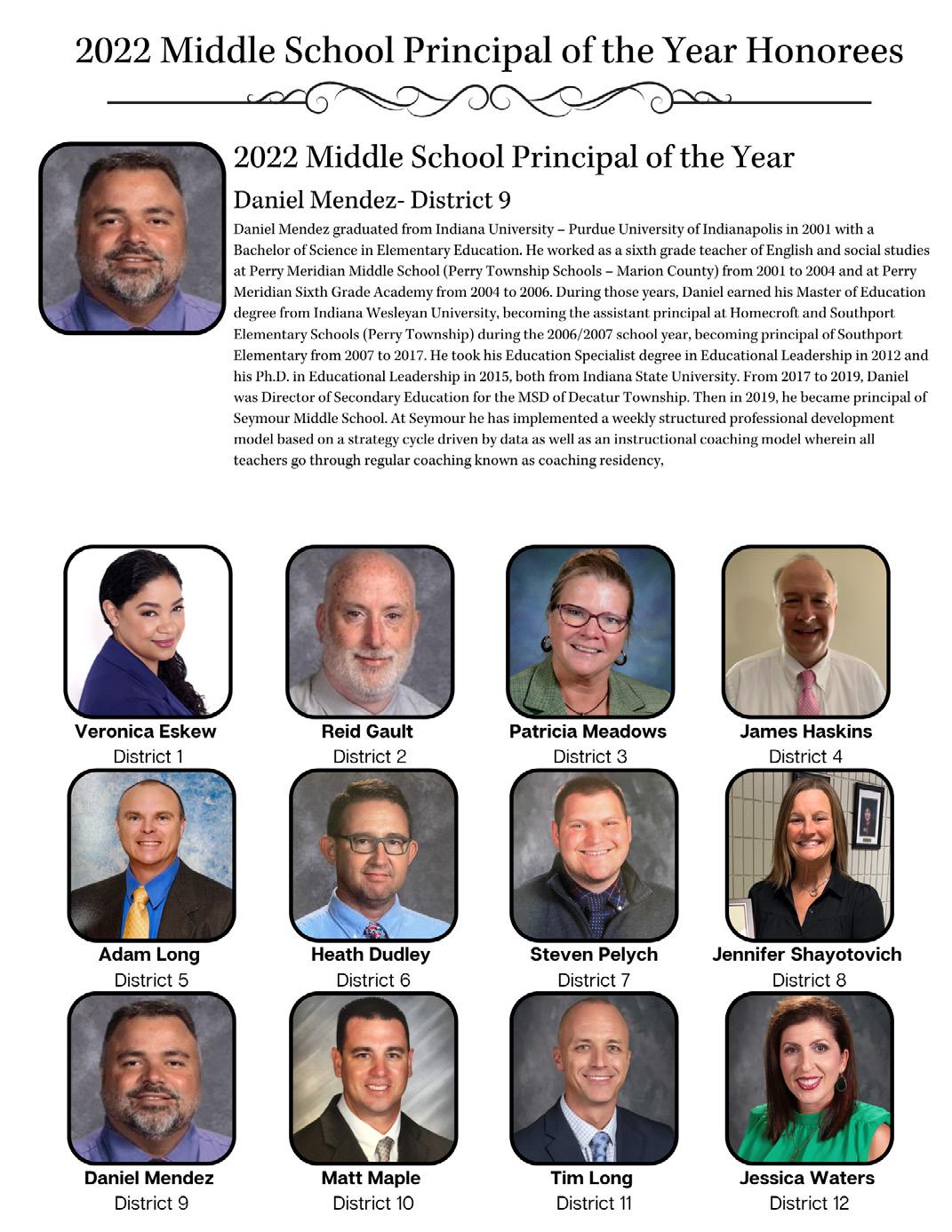



When the offer came out to write for the Indianagram, I jumped at the opportunity to discuss cultural responsiveness in our schools. I don’t deserve credit for this at Floyd Central High School. Dr. Rob Willman, our principal, created this committee in our school several years ago to meet a need for our students. Because I this, I have asked him to co-write this article with me.
Our school community at Floyd Central contains just under a 10% minority population. Being in a largely white, suburban school, it was desired to provide students with a voice who had possibly been ignored.
At first, only racial minority students were invited. Dr. Willman met in small groups with selected students and outlined its purpose, which was to get feedback on the climate and culture of the school regarding race. In addition to inviting students, we also sent home a letter to the parents outlining the purpose. Even though minorities as a whole perform well and are represented in student leadership groups, we thought that this group would bring a better understanding of how things really are from the perspective of a minority in a nearly all white school.
For this to happen, we needed to establish trust with the group. In addition to most of the administrative team, we asked 3 other adults to joinall were minorities: a teacher, a community organizer and a member of the central office administration.
The conversations were enlightening as well as uncomfortable. The students felt like minorities were seen in stereotypical ways and endured microaggressions and more severe experiences of racism. Had we not
created this group, we might not have been made aware. Students began reporting these examples and we were better able to address them and the administrative team was better able to send the message that “we have their backs.”
After the first year or so of meeting with this group, the students wanted to do something noticeable in the school. Several actions came as a result. The students started an Instagram page that highlighted the diversity of both the group and certain individuals. The second was a display of flags of countries of origin in our main hallway. It was a great way to display inclusion in our school. The third, and most significant contribution is the “Highlander Pledge,” which is stated below.
I believe that every person has worth as an individual.
■ Every person is entitled to dignity and respect.
■ Every act of prejudice* is harmful, so I will strive daily to eliminate prejudice from my words and actions.
■ I will discourage prejudice by others at every opportunity.
I will treat all people with dignity and respect; and I will strive daily to honor this pledge, knowing that the world will be a better place because of my effort.
*Prejudice (noun)
1. Preconceived opinion that is not based on reason or actual experience.
2. Harm or injury that results or may result from some action or judgment.
As easy as that sounds, it was difficult to agree on the wording of the pledge. After it was created by the Diversity Council but before it was finalized, the pledge was shared with a number of student and faculty groups, like the student council, student class leadership, building committee, our department heads, and the faculty cabinet. These groups were given the opportunity to suggest changes or edits to the pledge and then it was brought back to the Diversity Council for approval. The Highlander Pledge hangs in every classroom and office in our building. When students have an issue or problem, it is easy to ask them if they are living up to the pledge.
In addition, the Pledge is inclusive of everyone - not just racial minorities. All one needs to do is to read the first line. The word “every” was not chosen by accident.
While COVID did put the meeting of the group on hold for a while, we are now able to meet more regularity. We have a “flex” period that allows us to meet during the school day two times per month. One meeting generally has to do with organizations such as monthly celebrations, new member recruitment and social media and the other meeting is more discussion-based about current topics in the media or the school at large.
To truly know the real impact the group has had on the school, one would have to ask the students. However, from our perspective as school leaders we see a positive effect on both our culture and climate. We get a clearer picture of where we are and where we need to go.
Join us for this episode of the IASP LeaderCast. A weekly podcast production containing short, sweet nuggets of Wednesday Wisdom for our leadership growth. In this episode, we meet Matt Shockley, Principal at Avon High School and the new IASP President!
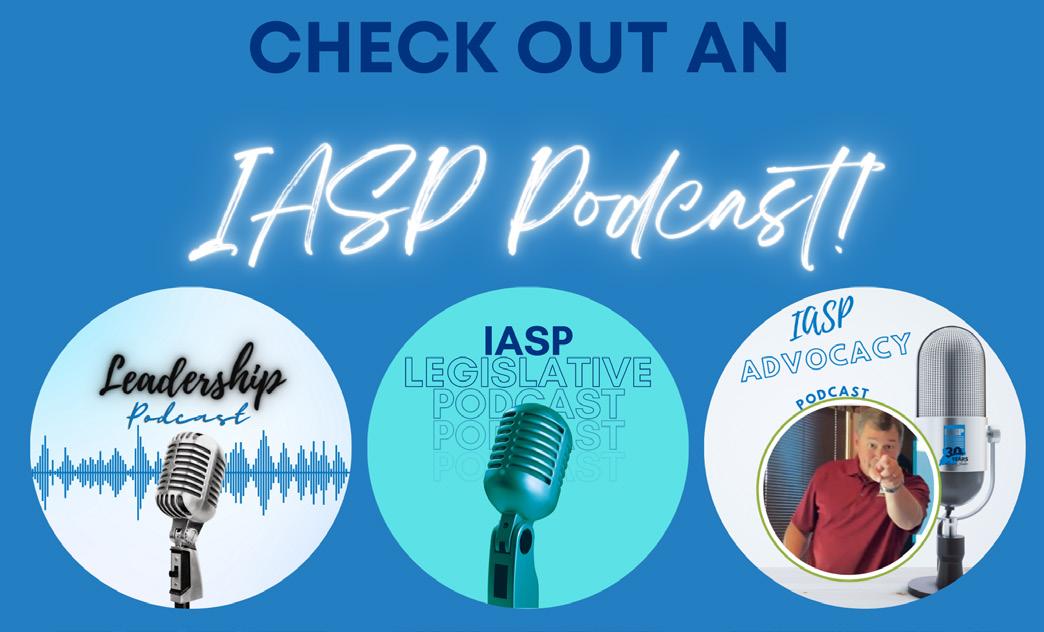


 Krista M. Stith Infinite Capacity, LLC Rachel L. Geesa Infinite Capacity, LLC
Krista M. Stith Infinite Capacity, LLC Rachel L. Geesa Infinite Capacity, LLC


This month, we explore and highlight approaches educators can take to support cultural responsiveness in STEM/STEAM programming. Culturally responsive educators adapt pedagogical praxes and behaviors to validate and affirm student voice, needs, academic performance, and cultural competence (Davis & Allen, 2020).
Approach 1: Conduct a Cultural Responsiveness Audit
Educational leaders can better understand the cultural responsiveness of educators and learning environments with a cultural audit. Audits can have utility in classroom learning environments, curricula, library content, and schoolwide programming. The NYU Metropolitan Center for Research on Equity and the Transformation of Schools has provided a Culturally Responsive Curriculum Scorecard Toolkit rich in content and resources to support educators. Additionally, the evaluation rubric for STEM Certification by the Indiana Department of Education (2022) hosts several evaluation elements that align with cultural responsiveness:
K-8 Grades
Element 1.9 Access and Opportunity to STEM Courses and Programs
■ Elementary: 100% of students participate in integrated STEM instruction/programming, other than related arts classes.
■ Middle school: STEM elective enrollment mirrors school demographics.
Element 2.5 Access and Opportunity for all learners
■ General education teachers and appropriate special education/support service teachers (High Ability, English as a New Language, interpreters, etc.) collaboratively plan for necessary STEM material development and refinement for diverse learners based upon their understanding of students’ academic needs.
Element 4.5 Access and Opportunity for STEM Experiences
■ Provides at least three opportunities/modes, with an action plan, to inspire and inform underrepresented student groups about careers in STEM fields.
Element STEM Work Groups
■ Students have opportunities to share their work with peers. Element Interviews
■ Guidance counselors, career coaches, and additional staff present three strategies that have been implemented to inspire and inform under-represented student groups about STEM careers.
■ A student panel is convened to discuss the opportunities for students to actively question, brainstorm, utilize the design process, and make decisions regarding the defined STEM program.
Approach 2: Identify Mentors
In a study to understand culturally responsive mentoring in middle school Black males, Davis and Allen (2020) share evidence of a beneficially impactful STEM program and suggest that mentors do not need formal preparations to teach but “can draw on their personal experiences and knowledge to find ways to reach and relate to their students” (p. 55). Yu et al. (2021), in a study with Latine middle school students, recommend identifying mentors that are both similar and diverse from the student population. In their study, groups of 6-10 middle school students were paired with one Latine mentor and one non-Latine mentor. The researchers share the following: Having mentors from similar racial/ethnic backgrounds can facilitate connections based on shared cultural and lived experiences. At the same time, racial/ ethnic diversity can afford opportunities for the development and practice of critical social-emotional skills such as cooperation, mutual respect, and different ways of thinking. (p. 14)
Approach 3: Engage Technology
Technology can be a valuable tool in engaging students in STEM. For example, Leonard et al. (2019) investigate selfefficacy in technology, twenty-first-century skills, and STEM career attitudes in African-American and Latine students through their engagement with computer simulations. A similar study by Lauritzen (2018) explores the impacts of a culturally-sensitive computer-based reading program on Native American secondary students. Both studies identify improvements in student academic performance and dispositions with technological interventions.
Approach 4: Provide Professional Learning for Educators
According to Erbstein and Fabionar (2019), educators of highquality STEM programs do not take a “color-blind” approach to teaching, but instead foster positive ethnic identities of students (p. 20). Professional learning can support educators in creating an educational climate responsive to diversity, social responsibility, understanding microaggressions, and sustaining a positive climate.
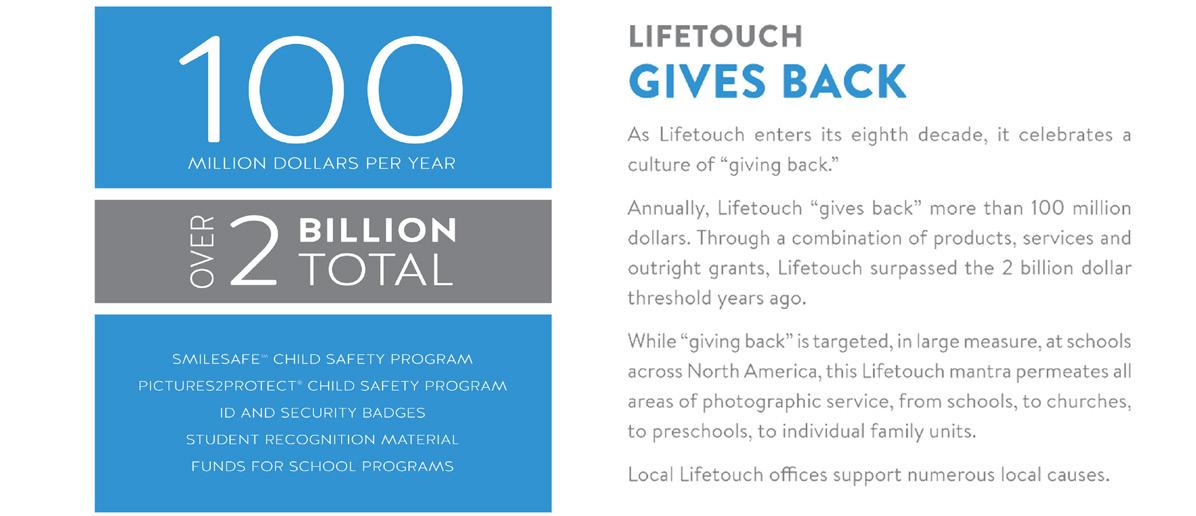
In the study by Yu et al. (2021), the researchers explore middle school Latine students’ participation in a math enrichment after school program. The student participants shared that the environment was collaborative, inclusive, safe, and respectful, and they “felt not only free but empowered to express themselves and their individual perspectives” (Yu et al., 2021, p. 10). Outreach programming can be tailored students’ needs and interests with purposeful integration of cultural competence.
Culturally responsive STEM education can catalyze students to develop into lifelong learners of STEM and integrative approaches to learning. Students who have experienced intentionality by educators in this domain of cultural responsiveness have perceived positive impacts. We encourage educators to explore these five strategies and ideate approaches for implementation.
Infinite Capacity is dedicated to inclusively fostering personal and professional growth for educators, leaders,
and community partners through innovative educational practices. Consulting services are available for school and district-level support. Please e-mail us at contact@ infinitecapacity.com for more information. Our book, Leadership in Integrative STEM: Strategies for Facilitating an Experiential and Student-Centered Culture, is available at Amazon, Barnes & Noble, and Rowman & Littlefield
Davis, J., & McIntosh Allen, K. (2020). Culturally responsive mentoring and instruction for middle school black boys in STEM programs. Journal of African American males in education, 11(2).
Erbstein, N., & Fabionar, J. O. (2019) Supporting Latinx youth participation in out-of-school time programs: A research synthesis. Afterschool Matters, 29, 17-27.
Indiana Department of Education. (2022). STEM education. https://www.in.gov/doe/students/stem-education/ Lauritzen, J. D. (2018). Using a computer-based reading program to provide culturally-responsive instruction for Native American students (Doctoral dissertation, Northcentral University).
Leonard, J., Barnes-Johnson, J., & Evans, B. R. (2019). Using computer simulations and culturally responsive instruction to broaden urban students’ participation in STEM. Digital Experiences in Mathematics Education, 5(2), 101-123.
Simpkins, S. D., Riggs, N. R., Ngo, B., Vest Ettekal, A., & Okamoto, D. (2017) Designing culturally responsive organized after-school activities. Journal of Adolescent Research, 32(1), 11-36. https://doi.org/10.1177/0743558416666169
Yu, M. V. B., Liu, Y., Soto-Lara, S., Puente, K., Carranza, P., Pantano, A., & Simpkins, S. D. (2021). Culturally responsive practices: Insights from a highquality math after-school program serving underprivileged Latinx youth. American Journal of Community Psychology, 68(3-4), 323-339. https://doi. org/10.1002/ajcp.12518
 Serena Salloum, PhD Associate Professor, Dept. of Educational Leadership Ball State University
Serena Salloum, PhD Associate Professor, Dept. of Educational Leadership Ball State University

In public education, the opportunity gap, or the arbitrary circumstances in which students are born, limits access to resources both inside and outside of school. Variance in student outcomes disaggregated by race, ethnicity, income and English learner status, continues to persist. School leaders have implemented programs, adopted new curriculum, instituted various practices and strategies in the classrooms to mitigate the opportunity gap. It is believed when marginalized students are given the proper resources and opportunities, they are capable of succeeding. One potential strategy to narrow the opportunity gap is culturally responsive teaching (CRP). CRP was explained by Gay (2000) as a multidimensional, student-centered approach that promotes equitable excellence and serves to validate and affirm the experiences and contributions of students from all cultures and backgrounds. This teaching approach merges students’ cultures and backgrounds within the curriculum. It also requires teachers to understand and accept students’ cultural and home linguistic ability while supporting students’ experiences outside of the school (Gay, 2010; Mayfield & Garrison-Wade, 2015). Practicing CRP allows the teacher to learn and embrace the culture of his or her students. CRP can also allow teachers to view student cultures as a strength in the classroom as opposed to a deficit (Samuels, Samuels, & Cook, 2017). This pedagogical paradigm shift is needed to improve the performance of underachieving students from various ethnic groups by tapping into student’s personal and cultural strengths, intellectual capabilities, and their prior accomplishments (Gay, 2018). Table 1 outlines differences between responsive and non-responsive classrooms.
■ Teacher differentiates instruction, recognizing students’ varying background knowledge, readiness, language, preferences in learning, interests, etc.
■ Teachers learn about diverse perspectives along with students
■ Teacher models active listening
■ Teacher involves students in collaborative groups
■ Teacher uses an investigative approach
■ Teacher arranges shared literacy experiences that build a sense of community
■ Teacher uses critical thinking techniques
■ Teachers helps students think in multiple ways and from multiple perspectives
■ Teacher criticizes the students, not the work
■ Teacher has low expectations
■ Teacher does not call on all students
■ Most students work in the form of isolated seatwork
■ Students are reprimanded for helping each other Teacherdominated lectures
■ Prefabricated worksheets or workbooks
■ Exclusive use of textbooks
■ Teacher reduces complex content to lists facts
■ Teacher never engages students in dialogue about the issues being raised in the text
Note. Text from Rightmyer, Powell, Cantrell, Powers, Carter, Cox & Aiello, 2008.
As a building leader, it might be difficult to assess if faculty are using CRP. To this end, the Culturally Responsive Instructional Observation Protocol (CRIOP) could be of use. The CRIOP is an instructional framework tool used to measure, evaluate, and operationalize culturally responsive pedagogy. This tool is designed to support instruction in six components of culturally responsive instruction: (a) classroom relationships, (b) family collaboration, (c) assessment practices, (d) instructional practices, (e) discourse/instructional conversations, and (f) critical consciousness (CRIOP Overview, 2021). The CRIOP provides 21 indicators of the six components that can guide practitioners in their quest to being a culturally responsive educator. The indicators provide teachers with direct tasks associated with being culturally responsive and the response from students (CRIOP Indicators, 2017).
Research indicates teachers who are deemed as high implementers of the indicators of the CRIOP, their students’
academic achievements were significantly higher from one semester to the next. This finding suggests that the intervention of culturally responsive practices were effective (Teemant, Wink, & Tyra, 2011). It also suggests that when elements of culturally responsive strategies and practices are clearly articulated and when teachers are supported in their attempts to implement the various facets, it can lead to changes in teacher behaviors. CRP sounds great in theory but the extent to which a lesson is responsive must be honed in to reach the students. Teachers using the CRIOP tool as a framework will afford teachers and leaders the opportunity to determine the extent of implementation of CRP (CRIOP Research, 2016).
With ethnically and linguistically diverse students sharing their lived experiences, this affords their presence to be accepted and affirmed in schools. It is necessary to connect students’ culture to their learning to enhance student engagement, the teacher and student relationship, and to increase student achievement. Culture is central to a student’s learning. This also allows for the narrative of their ethnic histories and the exploration of their learning styles to contribute to the educational system. Teachers can take this knowledge and cultivate a safe environment of acceptance and empathy that is grounded
in caring. Interpersonal relationships that can be developed by a culturally responsive teacher and a student should have a positive impact on the student. The implementation of culturally responsive practices can increase the expected outcomes of student performance, decrease the opportunity gap, and develop better student-teacher relationships at schools.
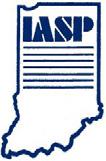
Gay, G. (2000). Culturally responsive teaching: Theory, research and practice (1st edition). New York: Teachers College Press.
Gay, G. (2010). Culturally responsive teaching: Theory, research, and practice (2nd edition). New York, NY: Teachers College Press.
Gay, G. (2018). Culturally responsive teaching: Theory, research, and practice (3rd edition). New York, NY: Teachers College Press. 2nd edition.
Mayfield, V. M., & Garrison-Wade, D. (2015). Culturally responsive practices as whole school reform. Journal of Instructional Pedagogies, 16, 1-17. Retrieved from https://files.eric.ed.gov/fulltext/EJ1069396.pdf
Samuels, A. J., Samuels, G. L., & Cook, T. M. (2017). Examining perceptions of culturally responsive pedagogy in teacher preparation and teacher leadership candidates. SRATE Journal, 26(2), 50-60.
Teemant, Annela & Wink, Joan & Tyra, Serena. (2011). Effects of coaching on teacher use of sociocultural instructional practices. Teaching and Teacher Education - TEACH TEACH EDUC. 27. 683-693. 10.1016/J.TATE.2010.11.006.



IPLI is a premier professional development opportunity for the practicing principals of Indiana. We support, encourage, and provide growth in your leadership as we learn, lead, and connect.

Over the last several years, we have focused much on culturally responsive teaching in our schools and classrooms. However, IPLI has also been curious about what skills our leaders need to lead a more equitable school to support teachers, students, and the community. What is a culturally responsive leader? There has been much written, and it would be helpful to synthesize and annotate many thought articles, but I would like to share two that might be helpful for you to consider.
Jackie Jenkins Scott (2020) states that culturally responsive leaders have four attributes in common that “drive responsive leadership.” She says that they focus on the people within the organization to achieve the success that sustains leadership through triumph and crisis and is transportable and transferrable in different environments.
■ Curiosity – the desire to continuously learn, discover and grow intellectually
■ Humility –sincere regard for the reality that we cannot go it alone
■ Empathy – ability to understand and appreciate other human beings
■ Resilience – capacity to recover and keep going forward in the face of adversity
https://trainingindustry.com/articles/leadership/4-attributes-of-responsive-leaders/
Matt Zalaznick (2020) discusses a framework of 8 actions to guide leaders in developing a vision for embedding equity into every facet of district operations. The eight actions are:
■ Leading for equity and access
■ Aligning mission, vision, and core values
■ Focus on instruction
■ Facilitate adult learning and development
■ Manage operations and resources
■ Engage in personal learning and development
■ Strategize change and continuous improvement
■ Cultivate community care and engagement
Check out this framework at https://districtadministration.com/8-actions-to-develop-culturally-responsive-leadership/
IPLI has been fortunate to have local, national, and international leaders such as Dr. Dennisha Murff, Dr. Tameka Hobbs, and Dr. Anthony Muhammad share their thoughts and experiences, assisting Indiana leaders toward a more thorough understanding of cultural responsiveness for our schools. IPLI leaders are embracing culturally responsive practices, skills, and attributes to reach all school stakeholders that touch the lives of each of our children.
IPLI Extended Learning for Alumni - Applications for IPLI Extended are Open http//indianapli.org/ipli-extended IPLI Extended is a formal, year-long, intensive professional development program for IPLI alumni. Extended allows participants to dig deeper into topics covered during the IPLI experience and beyond. In addition to three-day-long seminars, alumni may meet in regional focus cohorts throughout the state (August, October, and February via Zoom). Topics vary yearly so that alumni can enroll in Extended multiple times. IPLI Extended participants are encouraged to bring teacher-leaders to the seminars when appropriate. This year’s theme is “Leadership in Times of Change,” which feature the following speaker for January 2023: Dr. Mike Ruyle from Marzano Research.
The September speaker, Doug Noll, worked with the IPLI Alumni on Affect Labeling, which assists in de-escalating emotions. He has also provided follow-up Zoom meetings so the group can continue to practice calming conversations when needed.
IPLI Alumni also have the opportunity to experience the School Leader Paradigm Micro-Credentials program. Alums who wish to dig into this opportunity should reach out to Dr. Todd Bess or Tiffany Barrett at IASP to begin the process. Micro-Credentials are an excellent opportunity to extend your learning through your personal leadership lens and connect your first-year IPLI experience to the present.
We have openings for IPLI alumni to join us for the January seminar, work with an outstanding facilitator and be in-person learning together. The January Seminar will be held at the IASP Office in Indianapolis. Go to https://www.indianapli.org to complete the application.
We look forward to continuing to provide resources and updated skills and tools for school leaders in Indiana.
The statewide Kids Caring & SharingTM philanthropy partner program impacts thousands of children and families who need Riley Hospital each year thanks to the many generous and dedicated schools and school-based organizations represented through the Indiana Association of School Principals. Riley Children’s Health and the Riley Children’s Foundation are not only grateful to be recognized as the IASP’s state charity of choice throughout the year, we are honored to steward your gifts celebrating the IASP’s 30 years of advocacy, education and professional support.
Please join the celebration with your $30 gift benefitting Indiana’s only nationally-ranked, comprehensive, children’s research hospital!
regarding the impact of gifts within certain areas, we may already have a prepared one-sheet impact report available for you, please contact me for more information.
Additional ways to support Riley kids November 29 is Giving Tuesday, a day to celebrate generosity and explore choices for giving. Please join millions of people in this global movement for good starting with our little corner of the world, Riley Hospital. Please consider hosting a Riley “push” day to help raise awareness about and funds for the kids and families who need Riley! I am available to offer assistance in setting up an online giving page for your school to support your Giving Tuesday effort.
Join the 1924 Society by including Riley Children’s Foundation in your will or living trust, or as a beneficiary of your retirement account, insurance policy, or other assets. One of the simplest and most powerful and flexible ways to support pediatric research and care is through a bequest. You may choose to leave a specific dollar amount or asset, a percentage of your estate, or whatever remains after bequests to family and friends are fulfilled.
A bequest costs you nothing now and you have the satisfaction of knowing you are supporting children’s healthcare in the future.
Open your mobile phone camera, aim it at the QR code, click on the highlighted link and select DONATE to enter your gift.

This celebratory fundraising initiative replaces the Principal Service Corps annual Riley drawing/silent auction this year.
The 2021 Riley Children’s Health Annual Report is now available at rileychildrens.org/annualreport. Highlighting specialties and program distinctions, the annual report documents the latest medical and surgical efforts from Riley Children’s in pediatric research, patient outcomes, and quality and safety.
Kids Caring and Sharing school gifts support the most immediate needs of the hospital, unless specifically directed otherwise. We will always honor the intent of your gift. If you would like to share information with your school families
You retain control of your assets during your lifetime and you can modify a bequest at any time as financial or life circumstances change.
You may choose to direct your gift to a specific hospital department or research area or even establish a permanent fund that will support Riley for years to come.
Gifts to the Riley Children’s Foundation from your estate are exempt from federal estate taxes.

Planned Giving specialists are available through the Riley Children’s Foundation to work with you clarify your philanthropic interests and intentions. Please contact an attorney or tax advisor for appropriate legal advice.

 Melissa J. McCarty Attorney Kroger Gardis & Regas, LLP
Melissa J. McCarty Attorney Kroger Gardis & Regas, LLP
 Séamus Boyce Attorney Kroger Gardis & Regas, LLP
Séamus Boyce Attorney Kroger Gardis & Regas, LLP
We continue to address evolving education law question from IASP members via the KGR Legal Help Desk (LHD). With IASP conferences and the end-of-the-year approaching, we are mixing it up with a topic more focused on your personal legal wellness. The lowest hanging fruit is to help ensure that you have your estate planning in order. This article addresses the fundamentals of estate planning and encourages you to seek personalized legal advice. You are welcome to use the LHD to start the process for an initial consultation as a part of your IASP membership.
The term “estate” often conjures images of mansions, vast amounts of land, cars, and cash. But in the legal arena everyone has an estate: it is the sum of your money, real estate, personal belongings, and your legal rights to property minus your debts.
Estate planning is the process of inventorying your assets and liabilities, accounting for your particular family situation, and putting in writing - in legally enforceable documents - what you want to happen to your belongings and your dependents, how you want to be treated when you can’t speak for yourself, and who you want to act for you to make sure your wishes are followed.
An estate plan should include (1) a Last Will & Testament (which specifies what you want to happen to your stuff, who will become the guardian of your minor children, and create a financial mechanism to pay for their care); (2) a
health care advance directive (which tells health care providers what kinds of treatment and life-saving measures you do and do not want, as well as who you want to make and communicate those decisions for you if you can’t); and (3) a durable power of attorney (which designates a person as your legal agent to pay your bills, accept money owed to you, and handle your other financial matters if you cannot).
Depending on the stage of your life, the age and relationship of your dependents, and the size of your estate, your attorney may recommend other documents, such as a trust, or a funeral planning declaration.
Together, this set of legal documents will help ensure that your choices are followed when you can no longer speak for yourself.
As the epidemic has made clear, death is not the only reason to have an estate plan in place. Think about what would happen to your kids, pets, house, and bills if you suddenly became incapacitated and unable to communicate due to a stroke, car accident or a respiratory illness requiring a ventilator. According to one source, you have a 25% chance of becoming disabled.
Estate planning is important for you if you want to decide how your property is distributed after you die, if you want a say in what care you do or do not receive if you are temporarily or permanently incapacitated, and if you have minor children, other dependents or pets who rely on you to care for and support them. You don’t have to be
“rich” to make planning for your future worthwhile.
It’s all about who decides.
Consider this: in Indiana, if you die without a will (referred to as dying “intestate”), state law defines who gets your property, and in what proportion. That law does not differentiate between the sibling you adore and the one you’re estranged from; and it does not provide for the family members who are not related to you by blood or marriage. The intestate succession law also treats your grandfather’s hunting rifle and your great-grandmother’s diamond ring the same as an equivalent amount of cash, even if you and your family think of them as priceless.
And if you are divorced and remarried, especially if you do not have children with your second spouse, creating an estate plan is even more important to make sure your choices are followed.
Creating a tailored estate plan can also spare your family from arguments about what you want, and who gets to decide, when you are no longer able to communicate your wishes, whether due to incapacity or death.
How do you make an estate plan?
First, DIY may be fine for minor home improvement projects, but we recommend you do not do your estate planning yourself
Invest in yourself and your family’s well being by hiring a knowledgeable attorney. Many (including us at KGR) will provide a simple estate planning package for a flat fee. An attorney knowledgeable in estate planning
can ensure your choices are clearly expressed and legally enforceable. A competent attorney can also advise you on how to choose, when to choose, and the consequences of doing so, or not. Above all, having an attorney prepare your estate plan will give you peace of mind that you have done what you can to take care of the people you love.
There are some things you can do yourself to minimize the size and complexity of your estate:
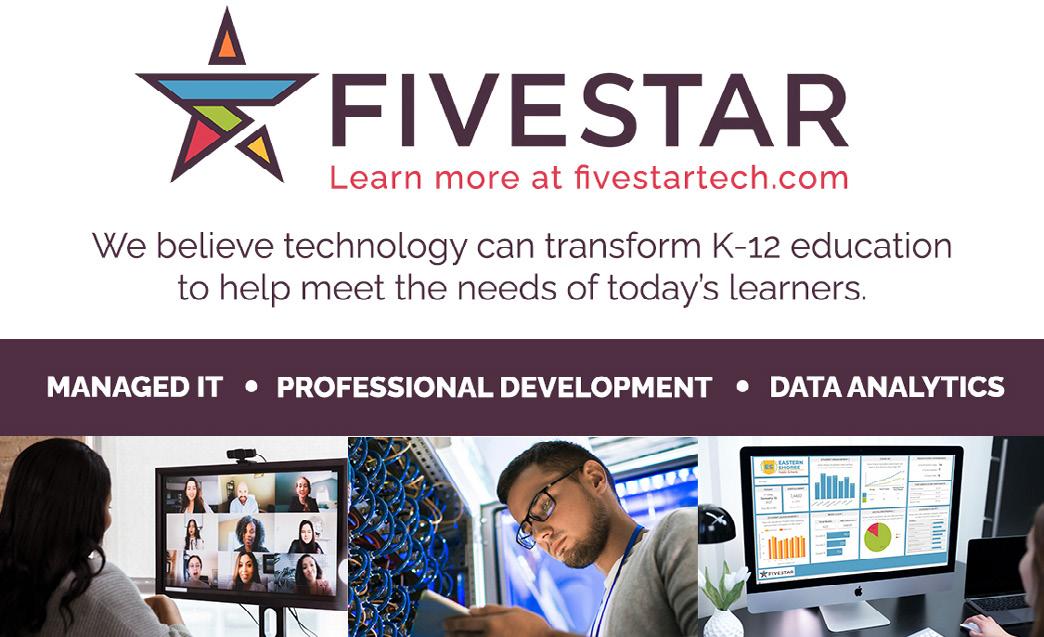
■ Do you know what will happen to your bank accounts upon your death? If you have a joint account (with your spouse, for example), the joint account owner will automatically own the entire account contents on your death. If your account is only in your name, the funds will be included in your estate unless you designate a “payable on death” beneficiary, who then can claim the contents of the account upon your death.
■ You can similarly designate your car title be transferred on your death to a beneficiary if it is not titled jointly.
■ Do you remember who you designated as the beneficiary of your 401(k) account, or your IRA? Life insurance policies also permit you to name one or more beneficiaries.
If you do not name a beneficiary, such assets become part of your (possibly taxable) estate. Make certain the beneficiary you named when you opened the account is still alive, and still the person you want to inherit the funds.
Finally, as your life changes due to births and deaths, marriages and divorces, new assets and closed accounts, make sure you also update your estate planning documents and beneficiary designations.
We at the KGR Legal Help Desk are here to address legal issues for IASP members. Until the next KGR Law Briefing, stay legal!
Please click to listen to this Briefing


11025 East 25th Street Indianapolis, IN 46229
1-800-285-2188 or 317-891-9900 www.iasp.org | iasp-info@iasp.org



Horace
AM-C04177 (10-22)